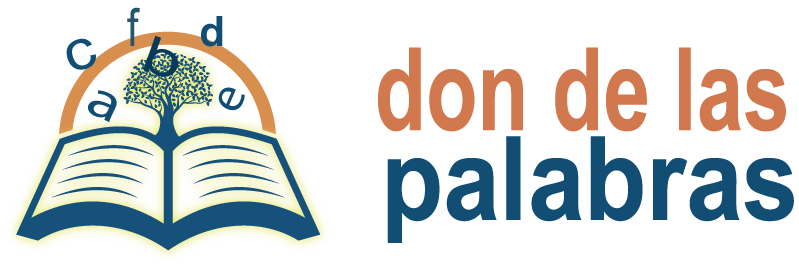
¿A quién podemos ayudar?
El enfoque Davis aborda los estilos de pensar y de aprender subyacentes de personas que muestran síntomas de dislexia, discalculia y TDA(H). Quienes experimentan estas diferencias de aprendizaje a menudo tienen problemas en los entornos educativos y laborales convencionales porque su manera visual-espacial de pensar puede provocar problemas a la hora de procesar símbolos, tales como palabras y números, o con la comprensión de conceptos clave para la vida como son ‘uno mismo’, ‘cambio’, ‘consecuencia’, y ‘tiempo’ entre otros.
A diferencia de otros métodos que abordan los síntomas de una dificultad de aprendizaje, Davis se centra en la raíz de su causa y elimina las barreras que, en el pasado, han impedido el aprendizaje. Así se abre un nuevo camino hacia el aprendizaje veloz junto con una mayor capacidad de enfocar la atención y formar parte íntegra del entorno educativo o del trabajo.
37 Caracterísiticas (Ronald D. Davis ©1992)
La mayoría de las personas que tienen un estilo de aprendizaje y de pensar disléxico, o visual-espacial, mostrará alrededor de 10 características o comportamientos de la siguiente lista, posiblemente más. Estos rasgos varían de un día para otro, e incluso de un minuto para otro. Lo más constante de los disléxicos es su falta de constancia.
General
- Parece espabilado, muy inteligente y elocuente, pero no logra el nivel apropiado a su edad en la lecto-escritura.
- Se le etiqueta como vago, poco inteligente, descuidado, inmaduro, “no se esfuerza”, or “problema de comportamiento”.
- No le va lo suficiente mal o tan atrasado como para recibir apoyo en el colegio.
- Coeficiente intelectual alto, pero no consigue buenos resultados académicos; las pruebas orales le van bien, pero las escritas no.
- Se siente estúpido; bajo autoestima; esconde sus debilidades con estrategias compensatorias ingeniosas; es muy sensible y se frustra con facilidad ante temas del colegio o exámenes.
- Destaca en artes plásticas, teatro, deporte, mecánica, contar cuentos, ventas, negocios, diseño, construcción o ingeniería.
- Con frecuencia parece “irse” o soñar despierto; se pierede con facilidad y pierde la noción del tiempo.
- Dificultad para mantener la atención; parece o hiperactivo o perdido en sus pensamientos.
- Aprende mejor a través de actividades prácticas, demostraciones, experimentos, observación y el apoyo visual.
Visión, lectura y escritura
- Con frecuencia, se queja de mareos, y dolores de cabeza o de estómago mientras lee.
- Le producen confusión las letras, los números, las palabras, las secuencias y las explicaciones verbales.
- Al leer y escribir, repite, añade, cambia de orden, omite, sustituye e invierte las letras, números y palabras.
- Se queja de sentir mareo o ver movimiento al leer, escribir o copiar.
- Parece tener dificultades de vista; sin embargo, el examen ocular no revela problemas.
- Es muy observador y tiene visión aguda o, por el contrario, le falta percepción de profundidad y visión periférica.
- Falta de comprensión a la hora de leer, aunque repita la lectura.
- Escribe la misma palabra de maneras diferentes, incluso en el mismo texto.
Audición y habla
- Oye mucho más de lo normal; oye cosas que no se han dicho o que otros no perciben; los sonidos y ruidos le distraen con mucha facilidad.
- Dificultad al verbalizar sus pensamientos; le cuesta componer las frases al hablar y a menudo no las completa; tartamudea bajo presión, dificultad para pronunciar palabras largas, cambia el orden de las frases, las palabras o las sílabas al hablar.
Escritura y habilidad motora
- Dificultad a la hora de escribir o copiar; coge el lápiz de manera poco usual; ortografía irregular o ilegible.
- Dificultad a la hora de coordinarse; no se le dan bien los juegos de pelota o de equipo; dificultades con las habilidades motoras finas y gruesas; se marea con facilidad.
- A veces es ambidextro y a menudo confunde derecha/izquierda, encima/debajo.
Matemáticas y gestión del tiempo
- Dificultad para leer la hora, gestionar el tiempo, aprender información o tareas secuenciadas, o para ser puntual.
- Depende de los dedos u otros ‘trucos’ para cálculos aritméticos; sabe las respuestas, pero no puede plasmar los procesos sobre papel.
- Sabe contra, pero tiene dificultad para contar objetos y manejar dinero.
- Sabe hacer cálculos aritméticos, pero no puede resolver problemas narrados; no comprende el álgebra ni conceptos matemáticos avanzados.
Memoria y cognición
- Excelente memoria a largo plazo para experiencias, lugares, y caras.
- Memoria pobre para secuencias, hechos, información que no ha experimentado directamente.
- Piensa principalmente con imágenes y sentimientos, no con el sonido de las palabras (carece de diálogo interno).
Comportamiento, salud, desarrollo y personalidad
- Extremadamente desordenado o compulsivamente ordenado.
- A veces es el payaso de la clase, alborotador, o demasiado introvertido.
- Las etapas de desarrollo (hablar, gatear, caminar, atar los cordones) fueron inusualmente adelantadas o tardías.
- Propenso a infecciones del oído; sensible a ciertos alimentos, aditivos y productos químicos.
- Tiene un sueño muy ligero o muy profundo; moja la cama más allá de la edad normal.
- Tolerancia muy alta o muy baja al dolor
- Sentido acusado de la justicia; emocionalmente sensible; procura la perfección.
- Los errores y los síntomas aumentan de manera dramática si se siente confuso, presionado, emocionalmente estresado, o está malo.
